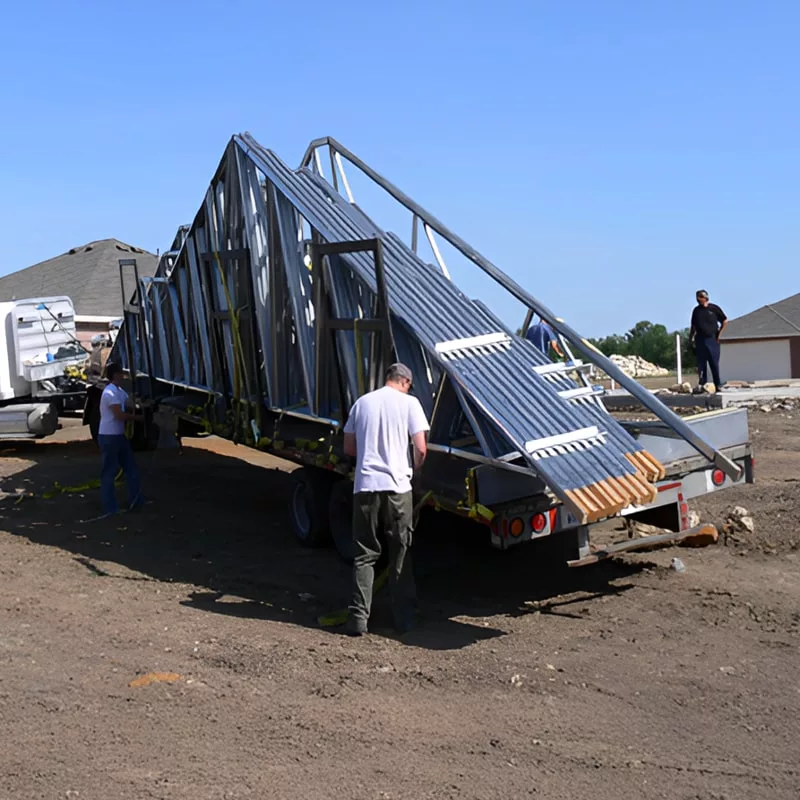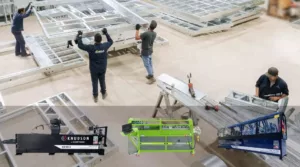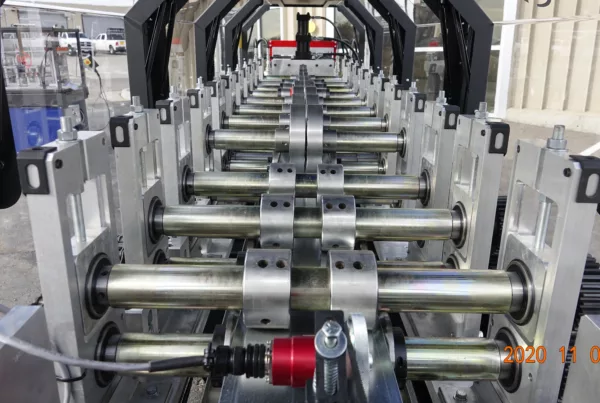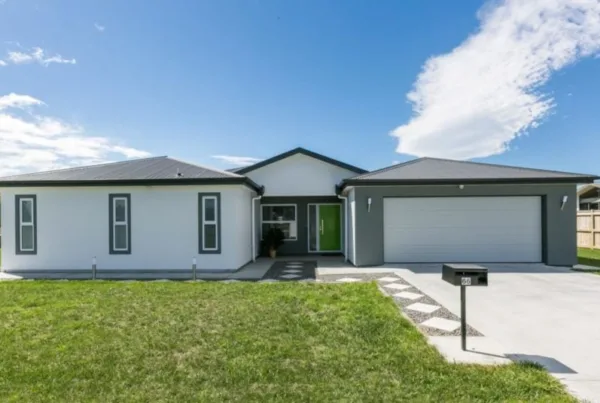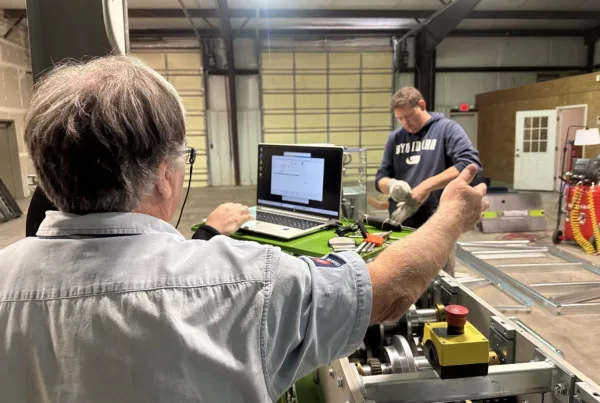Cold-formed steel and modular construction are a perfect match for offsite construction efficiency. In today’s fast-paced building environment, efficiency, precision, and sustainability are more important than ever. That’s why more developers are turning to modular construction, a process that allows entire buildings to be manufactured offsite and assembled onsite in a fraction of the time required for traditional construction.
At the heart of this innovation is cold-formed steel, a lightweight, durable material that is perfectly suited to the demands of modern building methods. Manufactured using advanced roll forming technology, cold-formed steel framing delivers the consistency and structural integrity needed for modular and offsite construction.
With steel framing machines producing precise components quickly and with minimal waste, the integration of roll forming steel framing machines into modular construction processes is reshaping how we build.
From single-family homes and residential developments to large-scale industrial and institutional developments, cold-formed steel modular construction is setting new standards for speed, quality, and long-term performance.
What is Modular Construction and Why Cold-Formed Steel Fits
Modular construction, also known as offsite or volumetric construction, is a building method in which complete modules (room- or section-sized units) are fabricated in a factory under controlled conditions and then transported to the site for assembly. These modules adhere to the same building codes and standards, such as IRC or IBC, as traditional construction, but allow for sizing, systems integration, and finishing to occur offsite.
Modular construction methods offer significant advantages. They are typically 20–50% faster than conventional builds, reduce onsite labor, lower waste, improve safety, and ensure quality through repeatable processes. Entire buildings can be 60–90% complete before being sent to the jobsite, allowing foundation work and module assembly to occur in parallel while saving valuable time and resources.
Although prefabrication dates back, modern modular construction gained momentum after WWII and again with late 20th-century industrial building methods. The Empire State Building, completed in 1931, famously used offsite fabricated components, completing one floor per day.
Today, the modular market is poised for explosive growth. The global modular construction market was valued at approximately $103.6 billion in 2024, with projections forecasting a compound annual growth rate (CAGR) of 7% from 2025 to 2030, reaching an estimated $162 billion by 2030.
In North America, modular construction holds a 14–15% share of the global market, with the U.S. market valued at $10.5 billion in 2022 and growing at 7.8% CAGR through 2030. Notably, 6.6% of all new construction starts in North America in 2023 were modular, underscoring a steady increase in adoption.
With rising demand for cost-effective and sustainable building methods, modular construction’s role is only set to expand.

5 Reasons Cold-Formed Steel and Roll Forming Technology Are Suited for Modular Construction
Let’s explore the top reasons why cold-formed steel and roll forming technology are most suited for modular construction.
1. Cold-Formed Steel Speeds Up Modular Construction with Scalability
Modular construction is all about efficiency, and cold-formed steel enhances it. With its high strength-to-weight ratio, cold-formed steel delivers structural integrity without adding bulk. This means faster crane lifts, simpler handling, and less structural redundancy. Its lightweight nature allows for quicker assembly and easier transportation, both essential for modular workflows.
Cold-formed steel is also ideal for mass production. Roll forming steel framing systems and machines operate at high speed with minimal waste, producing repeatable, precise components that fit seamlessly into modular manufacturing lines. This scalability makes cold-formed steel an ideal choice for developers building multifamily housing, modular communities, and hospitality projects.
2. Cold-Formed Steel Reduces Skilled Labor in Modular Construction
The construction industry faces a persistent skilled labor shortage. Modular construction mitigates this by moving much of the work offsite into a factory setting. With cold-formed steel, this advantage grows.
Unlike wood framing, which requires onsite cutting and skilled carpentry, steel framing arrives pre-punched, pre-cut, and ready to assemble. Most labor involves panel installation rather than custom work. This plug-and-go approach not only accelerates the build but also reduces labor costs, minimizes errors, and ensures consistency.
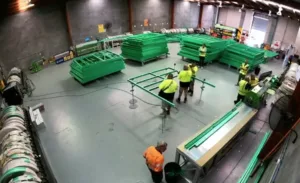
3. Roll Formed Cold-Formed Steel Enables Modular Design Flexibility
Cold-formed steel framing is extremely versatile. It can be formed into nearly any profile, allowing manufacturers to produce all major building components, from structural walls and floors to trusses and roofs. With cold-formed steel, a complete building envelope can be fabricated, making it possible to construct entire communities using a modular build strategy.
In residential applications, it’s common to fabricate a home per day and to fully install a home on-site per day. This level of repeatability and output is unmatched by traditional framing systems.
4. Sustainability and Low-Maintenance Cost of Cold-Formed Steel Structures
Cold-formed steel offers several sustainability advantages. It is 100% recyclable, does not warp, rot, or attract termites, and is mold- and fire-resistant. These properties reduce lifecycle maintenance costs and improve long-term building performance.
Because the material is lightweight, cold-formed steel also reduces transportation and equipment costs. It simplifies handling at the jobsite and eliminates the need for heavy machinery, especially valuable in remote or space-constrained projects.
5. Cold-Formed Steel Improves Onsite Logistics in Modular Construction
One of the major benefits of offsite construction is streamlined jobsite logistics. Since most fabrication and panelization occurs in the factory, less material needs to be stored or moved on-site. Deliveries are more predictable, and the installation process is faster and cleaner. Cold-formed steel modules arrive ready for placement, eliminating delays related to material staging or weather. The result: a more efficient, predictable, and cost-effective construction process.
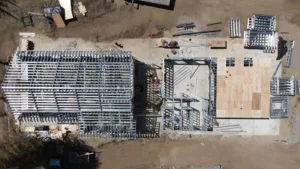
Bonus Reason: Cold-Formed Steel Offers Structural Resilience
Cold-formed steel modular construction excels in high-wind and seismic regions due to steel’s natural ductility and strength. This makes it especially valuable in areas prone to earthquakes, hurricanes, or other extreme weather events, where traditional materials like wood may fall short. Cold-formed steel can withstand lateral and uplift forces more effectively, offering peace of mind in disaster-resilient design.
Additionally, cold-formed steel is highly compatible with other building materials such as concrete, wood, and mass timber. This makes it ideal for hybrid modular construction, where combining materials can optimize cost, performance, and aesthetic outcomes.
For example, cold-formed steel may be used for structural framing and load-bearing components, while mass timber or concrete can be used for floors or finishes, creating efficient, attractive, and code-compliant buildings.
Future of Construction with Cold-Formed Steel Modular Solutions
By combining the speed and control of modular construction with the strength, precision, and sustainability of cold-formed steel, builders can deliver durable, scalable, and high-performance structures at a record pace. As adoption grows, cold-formed steel modular construction is emerging as a key solution to the construction industry’s most pressing challenges.
This method not only accelerates project timelines and reduces long-term maintenance costs but also addresses critical global demands such as housing shortages, climate resilience, and workforce constraints. Its compatibility with automation and digital design tools makes it ideal for the future of smart, sustainable construction. As the industry evolves, cold-formed steel modular construction will play a central role in reshaping how we think about building, offering a scalable, resilient, and environmentally responsible framework for meeting the needs of communities worldwide.
The Role of Roll Forming in Advancing Cold-Formed Steel Modular Construction
At the core of this transformation is roll forming technology. Without roll forming technology, the speed, precision, and repeatability required for cold-formed steel modular construction wouldn’t be possible. As modular construction continues to scale globally, roll forming will remain a foundational technology driving its growth.
Explore how Scottsdale’s roll forming machines can support your next modular project by visiting us at www.scottsdalesteelframes.com, calling us at 1 (888) 406-2080, or emailing us at sales@scottsdalesteelframes.com.
Additional Scottsdale Roll Forming Solutions and Resources
- Blog – Prefabricated Steel Framing – Revolutionary Success in the Petroleum Industry
- Blog – Sensational Hotel Fabricated with Scotpanel 7090 Rollformer
- Video – Modular Construction of a Light-Gauge Steel Framing Project in Namibia
- Video – Prefabricated Steel Framing Combined with Wood Trusses
- Financial Services
